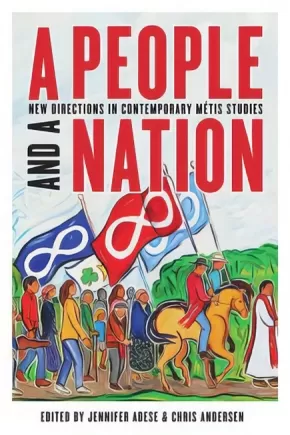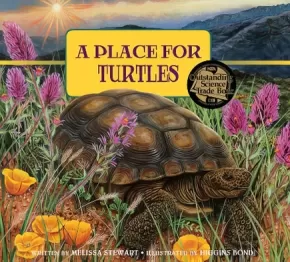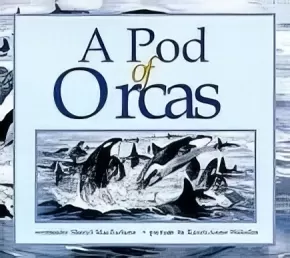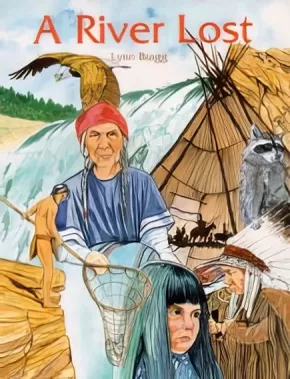
English
Books (6)
A People and a Nation: New Directions in Contemporary Métis Studies
$29.95
Editors:
Format:
Paperback
Text Content Territories:
Indigenous Canadian; Métis;
Grade Levels: University/College;
ISBN / Barcode: 9780774865074
Synopsis:
Synopsis:
In A People and a Nation, the authors, most of whom are themselves Métis, offer readers a set of lenses through which to consider the complexity of historical and contemporary Métis nationhood and peoplehood. Multidisciplinary chapters on identity, politics, literature, history, spirituality, religion, and kinship networks orient the conversation toward Métis experiences today.
The chapters within are themselves also a reorientation given that the field of Métis Studies has been afflicted by a longstanding tendency to situate Métis within deeply racialized contexts, and/or by an overwhelming focus on the nineteenth century. A People and a Nation confronts such problematic characterizations head on, training a critical gaze on conventional historiographical positionings of the Métis people as a primitive intermediate force that opened up the Canadian West.
A People and a Nation dismantles the impoverished notions that continue to shape political, legal, and social understandings of Métis existence. It is a timely collection that convincingly demonstrates how racialized interpretative frameworks diminish the Métis people and are incompatible with the task of understanding Métis peoplehood and nationhood.
Reviews
"A People and a Nation is fascinating and provocative, dealing with complex material in an intriguing and ambitious way."— Stephen Cornell, University of Arizona
"This book makes an important intervention in Métis Studies. No book like it currently exists. It will shift the field and move it forward, and belongs in classrooms across the country." — Carolyn Podruchny, York University
Educator Information
This important work will appeal not only to scholars in Métis studies but also to scholars and students of Indigenous studies, political science, sociology, history, and cultural studies, and to policy workers and others seeking a better understanding of the Métis people and the current state of Métis studies.
Table of Contents
Introduction: A New Era of Métis Studies Scholarship / Chris Andersen and Jennifer Adese
1 Peoplehood and the Nation Form: Core Concepts for a Critical Métis Studies / Chris Andersen
2 The Power of Peoplehood: Reimagining Metis Relationships, Research, and Responsibilities / Robert L.A. Hancock
3 The Race Question in Canada and the Politics of Racial Mixing / Daniel Voth
4 Challenging a Racist Fiction: A Closer Look at Métis-First Nations Relations / Robert Alexander Innes
5 Restoring the Balance: Métis Women and Contemporary Nationalist Political Organizing / Jennifer Adese
6 Alcide Morrissette: Oral Histories of a Métis Man on the Prairies in the Mid-Twentieth Century / Jesse Thistle
7 “We’re Still Here and Métis:” Rewriting the 1885 Resistance in Marilyn Dumont’s The Pemmican Eaters / June Scudeler
8 Mary and the Métis: Religion as a Site for New Insight in Métis Studies / Paul L. Gareau
9 Building the Field of Métis Studies: Toward Transformative and Empowering Métis Scholarship / Adam Gaudry
List of Contributors; Index
Additional Information
252 pages | 6.00" x 9.00" | Paperback
A Pipe for February: A Novel
$33.95
Format:
Paperback
Text Content Territories:
Indigenous American; Native American; Osage;
Grade Levels: University/College;
ISBN / Barcode: 9780806137261
Synopsis:
Synopsis:
"A Pipe for February is an extraordinary novel: evocative, riveting, moving. Charles Red Corn illuminates what the Osage people went through during the 1920s, when oil profits had made them fabulously wealthy and when they began to die under mysterious circumstances—systematically targeted for their money. This novel, exquisitely written and filled with revelations, will hold you in its grip and never let you go.”—David Grann, author of New York Times Best Seller Killers of the Flower Moon
At the turn of the twentieth century, the Osage Indians owned Oklahoma’s most valuable oil reserves and became members of the world’s first wealthy oil population. Osage children and grandchildren continued to respect the old customs and ways, but now they also had lives of leisure: purchasing large homes, expensive cars, eating in fancy restaurants, and traveling to faraway places. In the 1920s, they also found themselves immersed in a series of murders. Charles H. Red Corn sets A Pipe for February against this turbulent, exhilarating background.
Tracing the experiences of John Grayeagle, the story’s main character, Red Corn describes the Osage murders from the perspective of a traditonal Osage. Other books on the notorious crimes have focused on the greed of government officials and businessmen to increase their oil wealth. Red Corn focuses on the character of the Osage people, drawing on his own experiences and insights as a member of the Osage Nation.
In the new foreword, director Martin Scorsese reveals how reading A Pipe for February helped him better understand the Osage people and bring Killers of the Flower Moon to the screen.
Reviews
"A Pipe for February is an extraordinary novel: evocative, riveting, moving. Charles Red Corn illuminates what the Osage people went through during the 1920s, when oil profits had made them fabulously wealthy and when they began to die under mysterious circumstances—systematically targeted for their money. This novel, exquisitely written and filled with revelations, will hold you in its grip and never let you go"—David Grann, author of Killers of the Flower Moon—a New York Times #1 bestseller—and award-winning staff writer at The New Yorker
“A Pipe for February subtly weaves together some of the richest themes of contemporary American Indian Literature.” —Robert Warrior, author of Tribal Secrets: Recovering American Indian Intellectual Traditions
Additional Information
284 pages | 5.50" x 8.50" | Paperback
A Really Good Brown Girl
$20.00
Format:
Paperback
Text Content Territories:
Indigenous Canadian; Métis;
ISBN / Barcode: 9781771313452
Synopsis:
Synopsis:
Deluxe redesign of the Gerald Lampert Award-winning classic.
This edition of A Really Good Brown Girl features a new Introduction by Lee Maracle, a new Afterword by the author, and a new cover and design by the renowned typographer Robert Bringhurst.
First published in 1996, A Really Good Brown Girl is a fierce, honest and courageous account of what it takes to grow into one's self and one's Métis heritage in the face of myriad institutional and cultural obstacles. It is an indispensable contribution to Canadian literature.
"No other book so exonerates us, elevates us and at the same time indicts Canada in language so eloquent it almost hurts to hear it." --Lee Maracle, from the Introduction
Educator Information
This resource is also available in French: Une vraie bonne petite Métisse.
Additional Information
112 pages | 6.00" x 8.50"
A Reconciliation without Recollection?: An Investigation of the Foundations of Aboriginal Law in Canada
$57.00
Format:
Paperback
Text Content Territories:
Indigenous Canadian;
ISBN / Barcode: 9781487521875
Synopsis:
Synopsis:
The current framework for reconciliation between Indigenous peoples and the Canadian state is based on the Supreme Court of Canada’s acceptance of the Crown’s assertion of sovereignty, legislative power, and underlying title. The basis of this assertion is a long-standing interpretation of Section 91(24) of Canada’s Constitution, which reads it as a plenary grant of power over Indigenous communities and their lands, leading the courts to simply bypass the question of the inherent right of self-government.
In A Reconciliation without Recollection, Joshua Ben David Nichols argues that if we are to find a meaningful path toward reconciliation, we will need to address the history of sovereignty without assuming its foundations. Exposing the limitations of the current model, Nichols carefully examines the lines of descent and association that underlie the legal conceptualization of the Aboriginal right to govern.
Blending legal analysis with insights drawn from political theory and philosophy, A Reconciliation without Recollection is an ambitious and timely intervention into one of the most pressing concerns in Canada.
Educator Information
This work would be useful for the following subjects or courses: History, Canadian History, Indigenous Studies, Indigenous Politics, Indigenous Law, Law and Society, Philosophy, Political Science.
Includes forwards by John Borrows (Professor and Canada Research Chair in Indigenous Law at the University of Victoria Law School) and James Tully (emeritus distinguished professor of Political Science, Law, Indigenous Governance, and Philosophy at the University of Victoria).
Table of Contents
Part 1 Reconciliation without Recollection
1.1 Reconciliation in Canadian Jurisprudence
1.2 Reconciliation as Picture Thinking
A) Historicism
B) The Ship of State
1.3 History, Law and Legitimacy
1.4 Problem of Reconciliation as Problem of Foundations
1.5 A Genealogy of the Indian Act
Part 2 A Genealogy of Reconciliation: Civilizing, Extinction and Culturalism as the Discursive Foundations of the Indian Act
2.1 Liberty and Legitimate Despotism: The Liberal-Imperialism of J. S. Mill
2.2 The Science of Savage Character: The Uncivilized and Mill’s Philosophy of History
A) Governing the Uncivilized: The Role of the Intermediate Body
B) Peace, Order and Good Government: Mill and the Indian Question
2.3 Reading the Right of History: Universal History and the Extinction Thesis
2.4 From Enfranchisement to Reconciliation: Culturalism and Indirect Rule
Part 3 A Despotism for Dealing with Barbarians: A Survey of the Foundations of Indian Policy in Canada
3.1 Pre-Confederation to the Indian Act of 1876
A) Imperial Federalism
B) Imperial Civilizing
C) Assimilation and Indirect Rule
D) Striation or Continuity?
3.2 The Indian Question and the Dominion
3.3 The Six Nations Status Case
A) The Six Nations of the Grand River
B) The League of Nations and the Mandate System
C) The Documents
3.4 A Building Crisis of Legitimacy
Part 4 A Law Without Measure for a Land Without Citizens: The Indian Act in Canadian Jurisprudence
4.1 The Authority of s. 91(24)
A) St. Catherine’s Milling, s. 91(24) and the Division of Powers
B) Interjurisdictional Immunity and s. 91(24)
C) The Theory of Enclaves
D) The Uncertain Measure of Indianness
E) Section 88 and Provincial Law
4.2 The Definition of Indians and the Authority of Bands
A) Legislative Origins
B) The Judicial Definition of Indians
C) The Judicial Definition of Bands
D) Custom Band Councils and the Question of Jurisdiction
4.3 Tsilhqot'in Nation and the Meaning of s. 91(24)
Part 5 An Era of Reconciliation, An Era of Indirect Rule: From the White Paper to the Full Box of Rights
5.1 The Hidden Player: Policy from Calder to the Indian Act, 1985
A) Line One: Legislative Renovation
B) Line Two: Land Claim Agreements
C) Line Three: Constitutional Change
D) The Penner Report
E) The Problem of Implementing the New Relationship
F) The Era of Indirect Rule and the Mechanism of Deferral
5.2 Reconciliation and Implementation
A) Unsettling the Ship of State
B) Recollection without Historicism
C) Implementing Reconciliation-with-Recollection
Bibliography
Additional Information
408 pages | 6.00" x 9.00"
A Rush to Judgment: The Unfair Trial of Louis Riel
$24.99
Format:
Paperback
Text Content Territories:
Indigenous Canadian; Métis;
ISBN / Barcode: 9781459746091
Synopsis:
Synopsis:
Did Louis Riel have a fair trial?
The trial and conviction of Louis Riel for treason in the summer of 1885 and his execution on November 16, 1885, have been the subject of historical comment and criticism for over one hundred years. A Rush to Judgment challenges the view held by some historians that Riel received a fair trial.
Roger E. Salhany argues that the judge allowed the prosecutors to control the proceedings, was biased in his charge to the jury, and failed to properly explain to the jury how they were to consider the evidence of legal insanity. He also argues that the government was anxious to ensure the execution of Riel, notwithstanding the recommendation of the jury for clemency, because of concerns that if Riel was sent to a mental hospital or prison, he would eventually be released and cause further trouble.
Additional Information
352 pages | 6.00" x 9.00" | 13 b&w illustrations, index, bibliography, notes.
A Season in Chezgh'un: A Novel
$24.95
Format:
Paperback
Text Content Territories:
Indigenous Canadian; First Nations; Cree (Nehiyawak); Dene; Dakelh (Carrier);
Reading Level: N/A
ISBN / Barcode: 9781771623629
Synopsis:
Synopsis:
A subversive novel by acclaimed Cree author Darrel J. McLeod, infused with the contradictory triumph and pain of finding conventional success in a world that feels alien.
James, a talented and conflicted Cree man from a tiny settlement in Northern Alberta, has settled into a comfortable middle-class life in Kitsilano, a trendy neighbourhood of Vancouver. He is living the life he had once dreamed of—travel, a charming circle of sophisticated friends, a promising career and a loving relationship with a caring man—but he chafes at being assimilated into mainstream society, removed from his people and culture.
The untimely death of James’s mother, his only link to his extended family and community, propels him into a quest to reconnect with his roots. He secures a job as a principal in a remote northern Dakelh community but quickly learns that life there isn’t the fix he’d hoped it would be: His encounters with poverty, cultural disruption and abuse conjure ghosts from his past that drive him toward self-destruction. During the single year he spends in northern BC, James takes solace in the richness of the Dakelh culture—the indomitable spirit of the people, and the splendour of nature—all the while fighting to keep his dark side from destroying his life.
Reviews
“MacLeod offers the reader a thought-provoking and immersive portrait of a remote Dakelh community and of James, the driven Indigiqueer educator who chooses to work there—a man who must struggle with structural injustices, conflicting demands, prejudice, and his own divided self. A deeply authentic novel, and one that is both educative and heartfelt.” — Kathy Page, author of Alphabet and Dear Evelyn
“In A Season in Chezgh'un, Darrel J. McLeod moves confidently from the world of memoir to the new territory of the novel.” — Michelle Good, author of Five Little Indians
“A Season in Chezgh’un is about the search for meaning and for love, about grappling with history and loss, about creating a future out of quiet daring. I love the elegance of languages and cultures intermingling in this story, Cree, Dene, Nehiyaw, French, Spanish. Beautifully crafted, this novel is alive with dialogue that takes us into the hearts of characters too often left voiceless. Let this book sweep you away.” — Kim Echlin, author of Speak, Silence
Additional Information
320 pages | 6.00" x 9.00" | Paperback
Teen Books (1)
A Perfect Likeness: Two Novellas
$19.95
Format:
Paperback
Text Content Territories:
Indigenous Canadian; First Nations; Anishinaabeg; Ojibway;
ISBN / Barcode: 9781459828360
Synopsis:
Synopsis:
The volume brings together two previously published novellas by Richard Wagamese, Him Standing and The Next Sure Thing, with a foreword from author Waubgeshig Rice. Both stories follow the lives of young men who have dreams for a better future. In their search for fame and fortune, Cree Thunderboy and Lucas Smoke end up on paths where their biggest challenge is staying true to themselves.
In Him Standing, Lucas Smoke learns the art of carving from his grandfather. He discovers that he is a natural; he can literally make people come to life in wood. But when Lucas is asked to carve a spirit mask by a mysterious stranger, he quickly learns that his skill with a knife could cost him his dreams.
In The Next Sure Thing, Cree Thunderboy has two things he does well: playing blues guitar and picking winning horses at the track. Picking winners is just meant to be a means to an end—Cree's goal is to make his living playing the blues. He meets a powerful man at the racetrack who convinces him he can parlay his special skill with the horses into a shot at the fame and fortune he seeks.
Celebrated author Richard Wagamese artfully crafts these thrilling yet vulnerable stories of two young men trying to find their place in the world.
Educator Information
Themes: Indigenous, Coming of Age, Own Voice, Carving, Horse Racing.
Both stories in this collection are about a young Indigenous man trying to find his way and leaning on his background and culture to help him.
Both Him Standing and Next Sure Thing have a surreal or magical element.
Recommended in the Canadian Indigenous Books for Schools resource collection for grades 9 to 12 for English Language Arts.
Additional Information
248 pages | 5.50" x 8.00"
Kids Books (8)
A Night in Fernwood Forest
 $21.95
$21.95

Artists:
Format:
Hardcover
ISBN / Barcode: 9781771746021
Synopsis:
Synopsis:
Come with us for a walk along a secluded forest trail on a quiet night in May. We catch glimpses of ten animals as they move about in their woodland home from dusk until dawn. A mother cougar and her cub, a colony of bats, and a family of shrews are among the nighttime creatures we encounter. Beautiful full-page illustrations also depict many plants that live in this ecosystem. Information at the back of the book provides facts about nurse logs and the Pacific Northwest temperate rainforest.
A Night in Fernwood Forest is part of the By Day and By Night Nature Series. Books in this series focus on a specific habitat and explore the many connections within a healthy ecosystem. Through lyrical stories, supportive illustrations, labelled diagrams, and nature notes, readers learn about living and non-living parts of the ecosystem.
Additionally, readers can:
- use a picture clue on each page to predict the animal featured on the next page
- count animals as their numbers increase in each illustration
- search for an animal that travels from page to page
- discover patterns in the text and structure of each book
- track the movement of the sun or moon across the sky
Reviews
"A Night in Fernwood Forest is a companion volume to Fernwood Forest (2022), which introduced readers to plants and animals that reside in Fernwood Forest. In A Night in Fernwood Forest, we follow the movement of animals that are active after dark—a barred owl, a female cougar and her cub, Pacific tree frogs, a family of raccoons, a deer mouse, moths, mosquitoes, bats, shrews, and snails. Backmatter includes factual notes about the animals introduced in the previous pages, a labelled illustration of a nurse log, and pointers for respectful visits to forest ecosystems. Evocative full-page illustrations bring a sense of the darkness and mystery of nighttime in the forest.
Curriculum Connections: Regular Canadian Teacher Magazine readers will recognize the name of the author of this book (and others in the By Day and By Night Nature Series). Brenda Boreham brings her teaching experience and love of nature to these books, filling them with opportunities for the discovery of interactions between plants and animals in healthy ecosystems. Every page contains a clue about the animal that will be featured on the following page, and the movement of the sun or moon across the sky. Careful readers will notice that there is a numerical component in the introduction of each new species as well. This beautiful book will engage listeners and independent readers and support the science goals in elementary school classrooms." - Canadian Teacher Magazine, 2024 Winter Issue
Educator & Series Information
Recommended for kindergarten to grade 4.
This is a fictional story with factual information about the Pacific Northwest temperate rainforest.
Search for a moth that travels from page to page in this story!
Each book in the By Day and By Night Nature Series focuses on a scene typical of a distinct west coast habitat, showing how living and non-living things are connected in a healthy ecosystem. As readers, we observe animals going about their daily activities: caring for their young, searching for food, and responding to the changes in light, temperature, and weather conditions throughout the day or night. The last four pages of each book provide facts about the highlighted animals and plants as well as features that are unique to their habitats. The final page suggests ways that young readers and their families can be respectful as they visit wilderness areas.
Readers with a sense of curiosity will find opportunities in these books to:
- use picture clues to predict the featured animal on the next page
- identify, count, and sequence numbers (1 owl, 2 deer, 3 squirrels, etc.)
- search for small creatures that travel from page to page
- discover patterns in the text and structure of the books
- track the movement of the sun, or moon, across the sky
Curriculum Links
Reading - Providing opportunities for guided practise in using reading strategies: visualizing, making connections, asking questions, transforming, and inferring.
Science - Supporting discussion and further exploration:
- characteristics of living things
- needs of living things
- connections between living and non-living things
- daily and seasonal changes
- animal growth and changes
- plant growth and changes
- weather
- habitats
- observable patterns in the sky
Numeracy - Counting and sequencing of numbers 1 to 10.
Social Responsibility - Initiating discussions about ways to take care of wilderness areas.
Additional Information
32 Pages | 8.5" x 11" | Hardcover | ISBN: 9781771746021
32 Pages | 8.5" x 11" | Hardcover | ISBN: 9781771746021
A Place for Turtles
$10.95
Artists:
Format:
Paperback
ISBN / Barcode: 9781682630976
Synopsis:
Synopsis:
Turtles outlived the dinosaurs, but today they are one of the most threatened species of vertebrae on Earth. How can we help?
In simple yet engaging language, acclaimed science writer Melissa Stewart showcases twelve types of North American turtles, from the familiar box turtle to the majestic loggerhead turtle. Her clear narrative shows the threats these turtles face, and informative sidebars describe a wide variety of efforts to save them. Featuring glorious full-color illustrations by Higgins Bond and range maps for each turtle, this is a perfect choice for budding scientists, environmentalists, and nature lovers.
Awards
- Green Earth Book Award (Nonfiction) / The Nature Generation
- NSTA Recommends / National Science Teachers Association
- Outstanding Science Trade Books for Students K-12 / NSTA / CBC
Reviews
“While the topic of the book is clearly turtles, the narrative…will get young minds thinking about the interconnectedness of organisms, ecology, and the impact of human actions on the world around them. A classroom-friendly blend of story and fact.” ―Booklist
“A perfect resource.” ―National Science Teachers Association
Educator Information
This nonfiction picture book is recommended for ages 6 to 10.
Additional Information
32 pages | 10.25" x 9.25"
A Pod of Orcas (2 in stock) - ON SALE
$7.96 $9.95
Artists:
Format:
Paperback
ISBN / Barcode: 9781550417227
Synopsis:
Synopsis:
A beautiful new counting book by an award-winning author!
There is so much to count at the seashore - one lighthouse, two freighters, three eagles - and on and on, until you get to ten. Then a pod of orcas explodes out of the sea - so many, you can't begin to add them up. But wait. At the end of the day, you can count from ten all the way down again, as ten sailboats, nine fishboats, eight beach umbrellas - and on and on - gradually settle for the evening or pack up and drift away.
A gentle and poetic counting book by the award-winning author of Waiting for the Whales and Jessie's Island, Sheryl McFarlane's A Pod of Orcas is just the right bedtime read for eager little counters. Artist Kirsti Wakelin makes her picture book debut with exquisite watercolor paintings that glow with dreamy light and warmth.
Parents and educators will appreciate the simple, yet effective design. Each number appears spelled out and in numerical form. And small pictorial "clues" will lead pre-readers to every counting subject.
Additional Information
10.00" x 9.00"
A Promise Is a Promise: 30th Anniversary Edition
$7.95
Artists:
Format:
Paperback
Text Content Territories:
Indigenous Canadian; Inuit;
ISBN / Barcode: 9781773212937
Synopsis:
Synopsis:
When Allashua disobeys her parents and goes fishing on the sea ice, she has to use her wits to escape the Qallupilluit--the troll-like creatures her parents have always warned her about that live beneath the frozen surface of the sea. But the only way to break out of their grasp is through an exchange: Allashua can go free if she brings her brothers and sisters back to the sea ice instead. Allashua doesn't want to give them up, but what can she do? After all, a promise is a promise.
Educator Information
A Promise Is a Promise is a collaboration between award-winning storyteller Michael Kusugak and celebrated children's author Robert Munsch. This 30th anniversary edition brings all of the tension of the traditional Inuit story to a new generation of readers. Added features include a new foreword by Michael Kusugak on his role as a storyteller and the importance of storytelling in Inuit culture.
This resource is also available in French: Une Promesse, C'est Une Promesse
Additional Information
32 pages | 7.80" x 7.90"
A Quiet Storm
$12.95
Format:
Paperback
Text Content Territories:
Indigenous American; Native American;
ISBN / Barcode: 9781570674150
Synopsis:
Synopsis:
In this final book of the hi-lo Sydney's Journey series, Sydney has at last come to terms with the anguish of being a bully and being bullied herself. But when her boyfriend reveals that he is looking forward to going away to college, another issue arises: Sydney finds herself dealing with deep separation anxiety. She believes he is deserting her--just like her father did. Sydney retreats into herself and pushes her boyfriend and others away. When her best friend points out that her response is not healthy, Sydney decides to attend a Native women's sharing circle with her mother. Here Sydney realizes that the quiet storm troubling her heart can finally be healed.
Reviews
"A well-grounded reluctant reader title exploring the power of relationships." - Kirkus Reviews
Educator & Series Information
The publisher recommends this book for ages 12 to 18.
This book is part of the PathFinders Collection of Indigenous Hi-Lo- novels. Interest level is pre-teen on up.
The PathFinders series of Hi-Lo (high interest, low readability) novels offers the following features:
• Indigenous teen protagonists
• Age-appropriate plots
• 2.5 – 4.5 Reading Level
• Contemporary and historical fiction
• Indigenous authors
The PathFinders series is from an American publisher. Therefore, Indigenous terminology in the PathFinders books is not the same as Canadian Indigenous terminology. This prompts a useful teaching moment for educators in discussing appropriate terminology use in Canada.
This book is Book 3 in the Sydney's Journey series.
Additional Information
110 pages | 4.70" x 7.20" | Paperback
A Real Friend - Nunavummi Reading Series
$16.95
Artists:
Format:
Paperback
Text Content Territories:
Indigenous Canadian; Inuit;
ISBN / Barcode: 9781774505540
Synopsis:
Synopsis:
Matt is excited to join Junior Rangers and go on their spring hunting trip. During drills, an older ranger, Chaz, praises Matt's skills, and he jumps at the chance to hang out with Chaz. But when Chaz and his friends start making fun of a fellow ranger with less hunting experience, Matt feels pressured to join in. Matt doesn't want to bully anyone, but he doesn't want to be called a loser either. As his new behaviour pushes another friend away, and Matt sees his actions have consequences, he learns what being a real friend actually looks like.
Educator & Series Information
Graphic novel recommended for ages 9 to 11.
This book is part of the Nunavummi Reading Series, a Nunavut-developed series that supports literacy learning while teaching readers about the people, traditions, and environment of the Canadian Arctic. It is a Level 15-16 book in the series.
Nunavummi Reading Series books have also been officially levelled using the Fountas & Pinnell Text Level Gradient™ Levelling System. F&P Level of this book: O.
This book is also part of the Social Emotional Learning Series from Nunavummi. These books feature thoughtful, engaging stories that teach children to identify and regulate their emotions in healthy ways.
Additional Information
52 pages | 7.50" x 10.00" | Paperback
A River Lost
$11.95
Artists:
Format:
Paperback
Text Content Territories:
Indigenous American; Native American; Sinixt (Arrow Lakes);
ISBN / Barcode: 9780888393838
Synopsis:
Synopsis:
A River Lost is the familiar story of an ancient culture infringed upon and altered forever by modern technology. It is the story of how the construction of the Grand Coulee Dam led to the destruction of a way of life for members of the Arrow Lakes Tribe. Sinee mat and her great-grandmother Toopa tell the engaging story of life on the Columbia River, before and after the dam.
Additional Information
32 pages | 8.50" x 11.00"
A Salmon's Sky View
 $18.50
$18.50

Artists:
Format:
Hardcover
ISBN / Barcode: 9781771744461
Synopsis:
Synopsis:
The ink and watercolour illustrations in this book reflect the life cycle of a salmon from the salmon’s point of view looking up from underwater. Silhouette images provide a clue to the seasons and to the predators the salmon encounters throughout its life. The story reminds us how the salmon demonstrates great determination and strength in its long journey from the stream where life begins, to the ocean, and back to its natal stream.
Carol ends the story with a step-by-step instructional guide to create your own ink and watercolour image.
Educator Information
This is the 10th anniversary edition from CSWA Science in Society award-winning author/illustrator Carol McDougall, B. Ed., M.A. Carol is an international educator and conservationist with decades of classroom and fine arts teaching experience. She conducts workshops on using the arts to help make learning creative and engaging.
Recommended Grades: K-5.
Additional Information
32 pages | 11" x 8.5" | ISBN: 9781771744461 | Hardcover





















